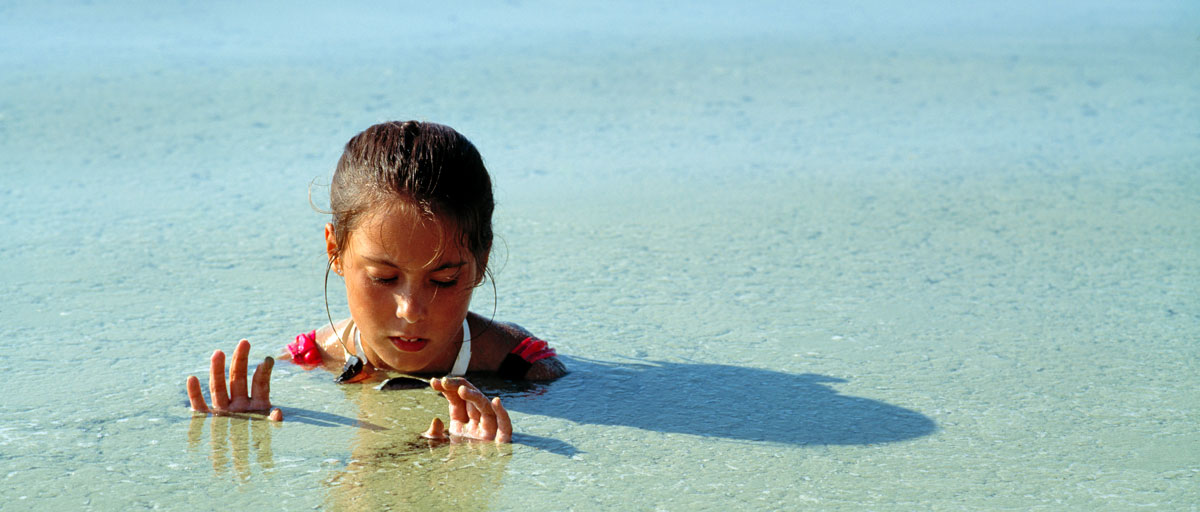
A new centre study shows that the late-1980s central Baltic Sea regime shift may not have been a system-wide shift, but rather have involved a smaller group of commercially important species. Photo: A. Maslennikov/Azote
Regime shifts
A big change, yet no change at all?
Even in a reported Baltic Sea regime shift, not all parts of the system are affected
- Late 1980s central Baltic Sea regime shift may not have been a system-wide shift
- Coastal and offshore food webs functioned largely the same before and after the shift
- Exponential Random Graph Modelling helped contribute to better understanding
It is easy to get transfixed on a small part of a bigger puzzle. When taking a step back, the results can be surprising.
Research on the Baltic Sea regime shift generally focuses on a handful of commercially important species and how they have been affected. However, centre PhD candidate Johanna Yletyinen and researchers Örjan Bodin and Thorsten Blenckner have published a paper clarifying the underlying mechanisms in the food web changes in the Baltic Sea.
They introduce a new approach to study changes in ecological processes in marine regime shifts.
Not necessarily a system-wide shift
They found that the late-1980s central Baltic Sea regime shift may not have been a system-wide shift, but rather have involved a smaller group of commercially important species.
That does not mean a big change can happen in the future though.
"Food web data can be extremely complex, and to study whether the food web functioning has changed as the presence of regime shift would suggest, we needed to develop a new approach to detect the core ecological processes in the food web," explains Yletyinen, the paper’s lead author.
New method application differentiates cause and effect
The study approaches the Baltic Sea food webs as a complex adaptive systems where species’ communities are defined as networks of trophic interactions between species.
In food webs, there are a number of commonly, or less commonly, occurring subgroups of interactions called motifs. The presence or absence of certain motifs in a given food web have been useful in studying food web stability and species roles.
"The late-1980s central Baltic Sea regime shift may have only involved a smaller group of commercially important species"
Thorsten Blenckner, co-author
However, in spite of the important insights that previous motif-based studies of food webs have provided, these earlier approaches have a limitation of being merely descriptive.
In this new study, Yletyinen and her colleagues applied a more dynamic approach. With some simplification, the difference could be compared to car mechanics: the descriptive approach lists the parts of a car, the dynamic approach tells how a car is assembled.
"The ability to differentiate between the prevalence of certain motifs as being the cause or the effect of any real underlying processes has been limited. With our approach, we can distinguish motifs driving the food web structure from motifs that are secondary effects of the driving motifs. This decreases risks for false conclusions on the effects certain motifs have on food webs," says co-author Örjan Bodin.
Social network analysis and modelling
In their study, the authors used Exponential Random Graph Modelling (ERGM), a social network analysis method and modelling tool that uses substructures and motifs to examine networks.
Using ERGM, the researchers detected the Baltic Sea’s food webs’ core ecological processes and notably demonstrated the applicability of ERGM in regime shift research.
"The ERGM analysis suggests that from the community-wide perspective, both the coastal and offshore food webs function largely the same before and after the Baltic Sea regime shift. The late-1980s central Baltic Sea regime shift may not be a system-wide shift, but instead involve a smaller group of commercially important species. However, the big change may still be ahead," Thorsten Blenckner explains.
Complementing the regime shift story
This study demonstrates that it is important to explore the whole system to complement time series research with structural approaches when considering a marine regime shift.
For Yletyinen and her colleagues, the results emphasize the need for additional research on the Baltic Sea regime shift.
"Our study highlights the hard-to-observe, system-wide shifts in ecological functioning within food webs, and further applications of ERGM could contribute to the theoretical and empirical understanding of regime shifts on ecological communities," she concludes.
Yletyinen J, Bodin Ö, Weigel B, Nordström MC, Bonsdorff E., Blenckner T. 2016. Regime shifts in marine communities: a complex systems perspective on food web dynamics. Proc. R. Soc. B 283: 20152569.
DOI: 10.1098/rspb.2015.2569
Johanna Yletyinen's PhD study, "Using network analysis to quantify the effect of climate on spatial explicit marine food-web interactions in the context of socio-ecological system dynamics", aims to provide new approaches to analyze the structural patterns of interactions in the social-ecological systems of the Baltic Sea.
Örjan Bodin's main focus is to develop better understanding of social-ecological systems through quantitative modeling and analyses of empirical data drawn from case studies and, more recently, behavioral experiments. He uses and develops theoretical/conceptual models and simulations, as well as engaging in empirical studies and empirical data analyses.
Thorsten Blenckner has a strong interest in whole ecosystem processes and multiple stressors, the complexity of for example the Baltic Sea ecosystem (eutrophication, overfishing, organic pollution and impacts of climatic change) appear as a fascinating research field. His current research is in food-web analysis and modeling of the Baltic Sea ecosystem.






